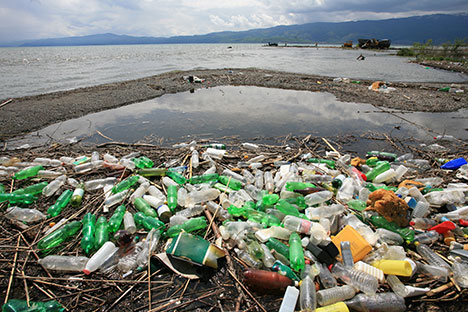By Alyson Laura, LEED AP BD+C, O+M
Sustainability Maven, Sustainable Investment Group (SIG)
Reduce, Reuse, Recycle, and Refuse!
 CDC Museum, Atlanta, Georgia. Until June 19, 2015, The David J. Sencer CDC Museum is hosting the traveling art exhibition, GYER: The Plastic Ocean. I saw the exhibit during one of the four coffee and tour events hosted by the curator, Louise E. Shaw, and it touched me personally and professionally. It’s not too late to register for one of these exclusive and free public tours. The final two will be held May 8, and May 22, 2015 from 9:30 to 11:00 am.
CDC Museum, Atlanta, Georgia. Until June 19, 2015, The David J. Sencer CDC Museum is hosting the traveling art exhibition, GYER: The Plastic Ocean. I saw the exhibit during one of the four coffee and tour events hosted by the curator, Louise E. Shaw, and it touched me personally and professionally. It’s not too late to register for one of these exclusive and free public tours. The final two will be held May 8, and May 22, 2015 from 9:30 to 11:00 am.
The exhibit was organized and designed by the Anchorage Art Museum in response to some startling figures. Cumulative until 2011, the State of Alaska has collected over 2.4 million pounds of trash from 1,973 miles of coastline. Ever increasing amounts of debris washing up on their coastline caused Alaskans to look amongst themselves and wonder, ‘Did all this trash come from Alaska?’ In short, no. This exhibit was inspired by the artists who collect and repurpose marine debris into beautiful works of art, and by those artists who are making environmental statements in reaction to the condition of our plastic oceans.
The major problem with plastic trash is that it travels easily; wherever the current takes it. It starts on land when a fast food cup is left on the ground and swept into the storm sewer. That plastic straw and lid discharge into a rover and float downstream until it reaches the sea. Sometimes the ocean spits it onto far flung coasts, but more often it gets drawn into one of the five naturally occurring gyers in our largest oceans. The one you’ve heard about most commonly is the North Pacific Gyer. Recent estimations place the area of concentrated plastic distribution equivalent to the size of the entire continent of North America.
This exhibit was really great because it sprinkled hard-hitting environmental facts among visually stunning paintings, photographs, sculpture, and video. I don’t want to give away all the dramatic trivia, you should go see for yourself, and bring your kids for some important lessons on resource responsibility. Normally I feel confident proclaiming that I am a savvy consumer and will even boast my sustainability credentials, but after witnessing this exhibit, I’m re-thinking my mindless habits. Next time I have an empty plastic bottle and no recycle bin in site, I’m going to hold onto it and ensure it stays out of a landfill. Next time I see a plastic bag sitting in a gutter, poised to begin its journey out to sea, I’m going to go out of my way to prevent its departure.
The trouble with plastic is that it never breaks down, it only gets smaller. As we toured the show, I saw many examples of the ghostly elegance that plastic takes on when it’s been tumbled and weathered for decades. I also saw the harsh reality of what happens when animals mistake these particles as food. There is even a new word to identify the tiny bits of plastic that are polluting our oceans en masse, nurdles.
My favorite take away from the show was learning a new mantra for resource efficiency: Reduce, Reuse, Recycle, and Refuse. Everyone knows the three ‘R’s as well as we know that, ‘only you can prevent forest fires.’ Now we have a fourth responsibility, Refuse unnecessary waste. Even if your city or state hasn’t banned plastic bags, you always have the opportunity to refuse plastic bags when shopping. Bring your own canvas tote bags, or ask for paper bags. Does your favorite take-away lunch spot serve food in Styrofoam containers? You can refuse to use Styrofoam by bring your own reusable containers. This choice is still controversial because most reusable food containers are also petro-based produced. The science is that hard plastics are more readily and easily recycled than Styrofoam, which most often ends up in a landfill.
I hope you have an opportunity to attend this interesting and inspiring show. The CDC Museum is free and open to the public Monday to Friday 9-5. Special tours can be arranged by request.
For more information, please contact Louise Shaw at 404-639-3657, museum@cdc.gov. 1600 Clifton Road NE, Atlanta, GA 30329. Phone 404-639-0830.
© 2015 Sustainable Investment Group (SIG). All Rights Reserved.



